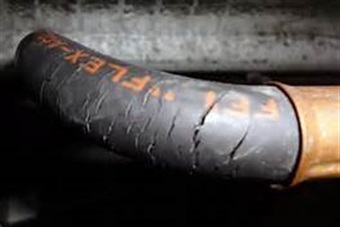
Fuel Leaks can be avoided
Unless you’ve been hiding under a rock, you probably know that during last several years, ethanol has been added to gasoline. But did you know that ethanol can degrade older fuel lines much faster then anticipated. Even newer hoses don’t have quite the same lifespan.
Degraded fuel lines get brittle and will eventually leak — and a leaking fuel line is a disaster waiting to happen. If your hoses are more then ten years old (proper USCG-approved hoses are date-stamped when they were made), bend them, squeeze them, and see if they move or rotate on the fuel fittings. If so, they’re loose enough to leak. Sometimes fuel hoses are accidentally stepped on and damaged during routine engine maintenance. Run your hand along the hose or use a clean white rag and see if you smell gasoline (or worse, see it). If so, replace the hose using approved fuel line.
Choices of fuel hose
While there are different types for different purposes on a boat, we recommend using only USCG-approved A1-15 hose. This hose has passed rigorous testing and can withstand a 2.5-minute burn test, which is designed to be enough time to put out a fire or abandon ship before the hose begins leaking. Most fuel-line manufacturers suggest that their fuel lines should replaced every 10 to 15 years even if there are no indications of leaks or damage.
Other places gasoline can leak are where hoses connect to other fittings. Fuel-fill spuds, fuel-tank lines and gas-tank gaskets, as well as carburetor and fuel-pump fittings can leak. Use the clean dry-rag method for these areas too.